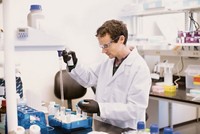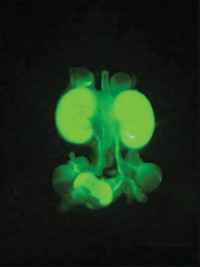Advertisement
Grab your lab coat. Let's get started
Welcome!
Welcome!
Create an account below to get 6 C&EN articles per month, receive newsletters and more - all free.
It seems this is your first time logging in online. Please enter the following information to continue.
As an ACS member you automatically get access to this site. All we need is few more details to create your reading experience.
Not you? Sign in with a different account.
Not you? Sign in with a different account.
ERROR 1
ERROR 1
ERROR 2
ERROR 2
ERROR 2
ERROR 2
ERROR 2
Password and Confirm password must match.
If you have an ACS member number, please enter it here so we can link this account to your membership. (optional)
ERROR 2
ACS values your privacy. By submitting your information, you are gaining access to C&EN and subscribing to our weekly newsletter. We use the information you provide to make your reading experience better, and we will never sell your data to third party members.
Biological Chemistry
Using Stem Cells To Make Blood Substitutes
Artificial blood derived from cord blood stem cells is being tested in humans
by Sarah Everts
February 23, 2009
| A version of this story appeared in
Volume 87, Issue 8

For decades, researchers have been trying to develop artificial blood to eliminate reliance on blood donors, as well as the risk of infectious disease transmission and blood-type rejection.
Although billions of dollars have been invested, the Food & Drug Administration has not yet approved a blood substitute for use in humans. Now French researchers are set to conduct the first human clinical trials of red blood cells harvested from stem cells.
Chemists have tried making artificial blood from diverse molecules, ranging from perfluorocarbons to hemoglobin. But about a decade ago, researchers began wondering whether stem cells might be a way to make safe blood without the need for donors, says Luc Douay, a stem cell biologist from the Hemotological Laboratory at the University of Paris VI.
The idea took a concrete step toward reality when Douay and his colleagues produced fully mature human red blood cells from hematopoietic stem cells, a feat they reported in Nature Biotechnology (2005, 23, 69).
The red blood cells, which were cultured from stem cells obtained from umbilical cords of both newborn babies and adult bone marrow, survived in mice.
The study was "a significant milestone in cell engineering," noted Mohandas Narla of the New York Blood Center in an associated Nature Biotechnology commentary in the same issue. But amid his enthusiasm about the method's potential, Narla pointed out that the protocol requires one unit of cord blood (about half a liter) to deliver between two and four units of transfusable red blood cells. Because millions of units of blood are required annually, the technique falls short of being a real alternative to donors, he noted.
In past years, Douay continued developing techniques for producing larger quantities of red blood cells from a smaller amount of stem cell media, he tells C&EN. At the beginning of February, he began enrolling subjects in the first human clinical trial of stem-cell-based red blood cells. The feasibility study will examine the life span of the cells in humans to see how it compares with the 120 days that a normal red blood cell lasts and the 30-day life span of a transfused donor blood cell, Douay adds.
If the product were to reach the market, Douay says he would produce the red blood cells from stem cells of Type O-negative individuals because their blood lacks the immunogens that incite most rejections in patients.





Join the conversation
Contact the reporter
Submit a Letter to the Editor for publication
Engage with us on Twitter